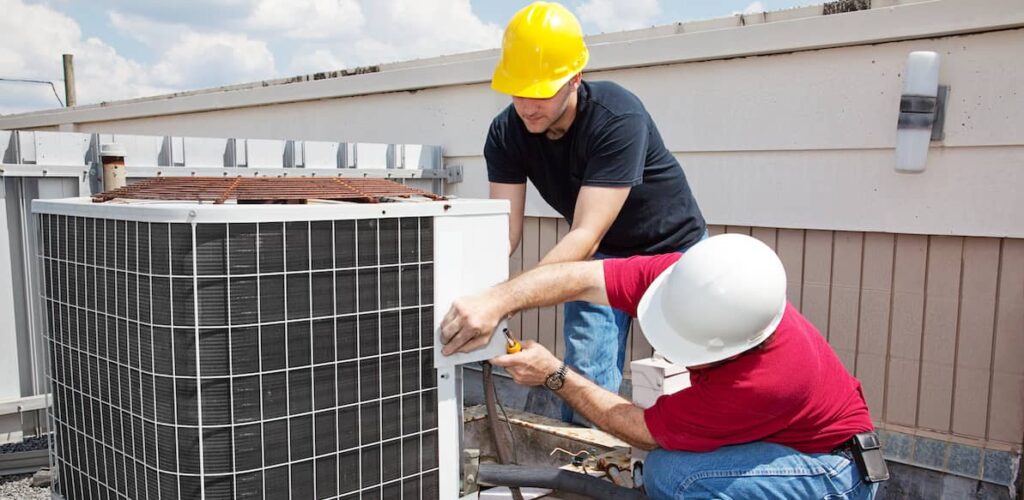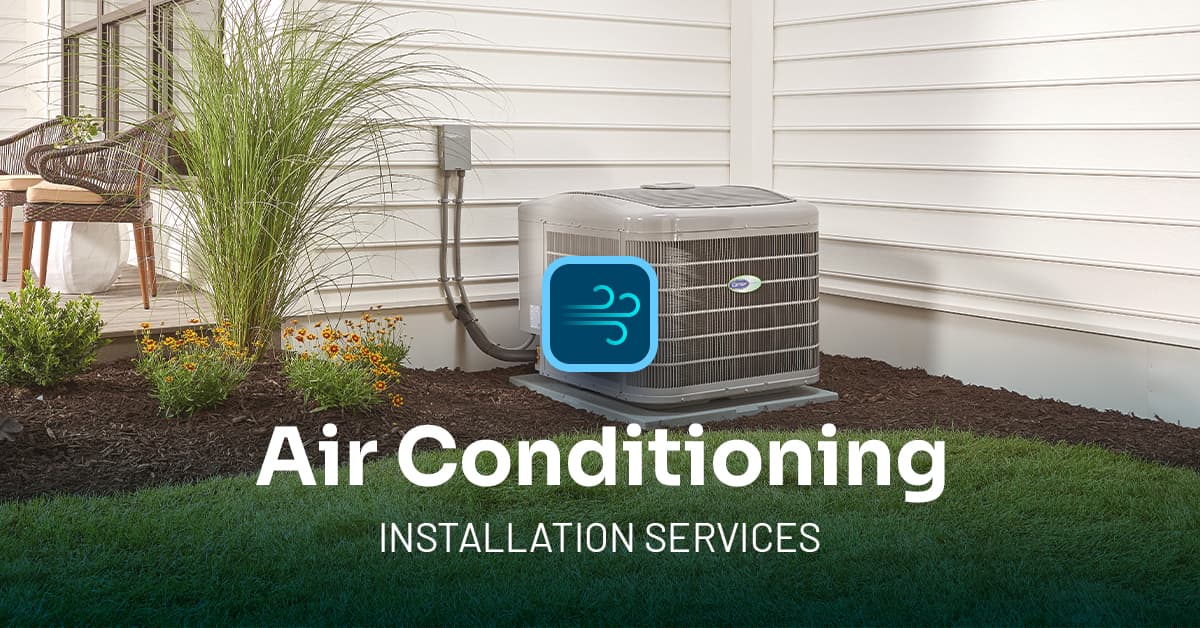Installing an air conditioning system requires careful planning, preparation, and execution to ensure optimal performance and efficiency. Here’s a step-by-step guide on how to install an air conditioning system:
Step 1: Determine System Requirements
- Calculate Cooling Load: Determine the cooling load requirements for the space to be cooled, taking into account factors such as square footage, insulation, orientation, occupancy, and heat-generating equipment.
- Choose System Type: Select the appropriate type of air conditioning system based on the cooling load, space constraints, energy efficiency goals, and budget. Options include central air conditioning, ductless mini-split systems, window units, and portable air conditioners.
Step 2: Select Equipment and Components
- Choose Air Conditioner: Select the right size and model of air conditioner for the space based on the cooling load calculations. Consider factors such as energy efficiency ratings (SEER), capacity, brand reputation, and warranty.
- Select Components: Determine the necessary components for the installation, such as indoor and outdoor units, refrigerant lines, insulation, thermostats, and electrical wiring. Ensure compatibility and proper sizing of components.
Step 3: Plan Installation Location
- Choose Indoor Unit Location: Select an appropriate location for the indoor unit (evaporator), considering factors such as airflow, accessibility, aesthetics, and noise levels. Install the indoor unit at a height and position that allows for optimal air distribution.
- Choose Outdoor Unit Location: Choose a suitable location for the outdoor unit (condenser), considering factors such as airflow, clearance requirements, noise considerations, and accessibility for maintenance.
Step 4: Install Refrigerant Lines and Components
- Install Refrigerant Lines: Connect the indoor and outdoor units with insulated refrigerant lines, following manufacturer specifications and local building codes. Ensure proper sizing, routing, and sealing of refrigerant lines to prevent leaks and optimize system efficiency.
- Install Drainage System: Install a condensate drainage system to remove excess moisture from the indoor unit. Connect the drain line to a suitable drain or discharge point, ensuring proper slope and clearance to prevent clogs and leaks.
Step 5: Electrical Wiring and Connections
- Connect Electrical Wiring: Install electrical wiring to connect the indoor and outdoor units, thermostat, and power supply. Follow local electrical codes and manufacturer guidelines for wiring size, connections, and safety precautions.
- Test Electrical Connections: Verify that all electrical connections are secure and properly insulated. Test the system for power supply and voltage to ensure safe operation.
Step 6: Install Controls and Thermostat
- Mount Thermostat: Install the thermostat in a central location for optimal temperature sensing and control. Follow manufacturer instructions for mounting height and wiring connections.
- Program Thermostat: Set up and program the thermostat according to user preferences and scheduling requirements. Configure temperature settings, fan speeds, and operating modes for optimal comfort and energy efficiency.
Step 7: Final Testing and Commissioning
- Test System Operation: Turn on the air conditioning system and test all components, including the indoor and outdoor units, refrigerant lines, electrical connections, and thermostat. Verify proper airflow, cooling capacity, and temperature control.
- Check for Leaks: Inspect the system for any refrigerant leaks, loose connections, or abnormalities. Use leak detection tools or soap bubbles to identify and repair leaks if necessary.
- Adjust System Settings: Fine-tune system settings and controls to optimize performance, comfort, and energy efficiency. Adjust airflow direction, fan speeds, and temperature settings as needed.
- Provide User Training: Educate users on how to operate the air conditioning system effectively, including how to adjust settings, change filters, and troubleshoot common issues.
- Complete Documentation: Document all installation details, including equipment specifications, wiring diagrams, maintenance schedules, and warranty information. Provide copies to the customer for reference.
Step 8: Schedule Maintenance and Follow-Up
- Schedule Regular Maintenance: Advise the customer to schedule regular maintenance and service for the air conditioning system to ensure ongoing performance and longevity. Provide information on filter replacement, coil cleaning, and annual inspections.
- Follow-Up: Follow up with the customer after installation to ensure satisfaction and address any questions or concerns. Provide contact information for ongoing support and service requests.
By following these steps and adhering to manufacturer guidelines and local building codes, you can successfully install an air conditioning system that provides reliable cooling comfort for your customers. If you’re not experienced in HVAC installation, it’s recommended to hire a licensed Air Conditioning Installation in Newton NJ to perform the installation safely and effectively.

